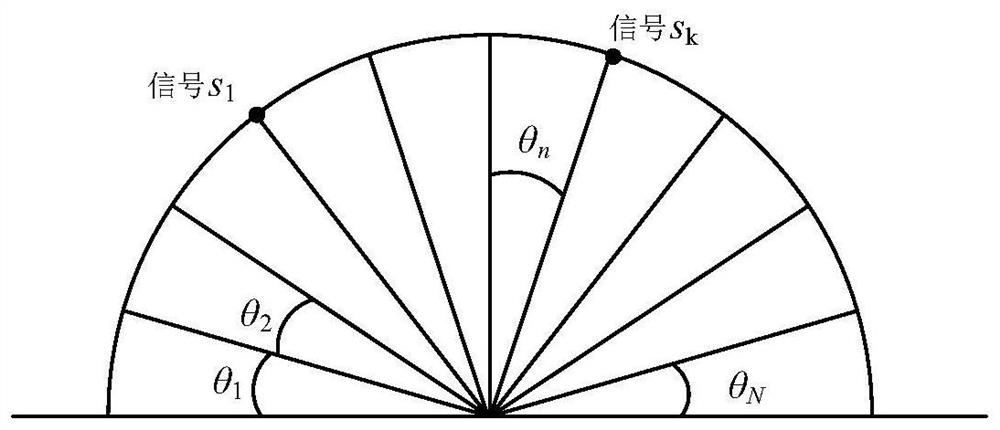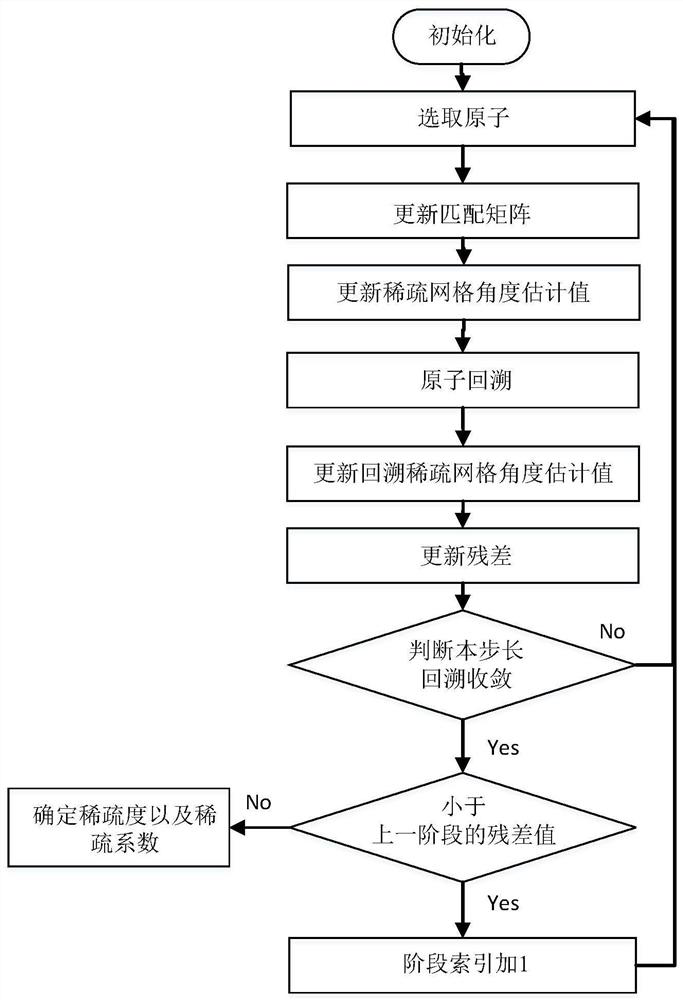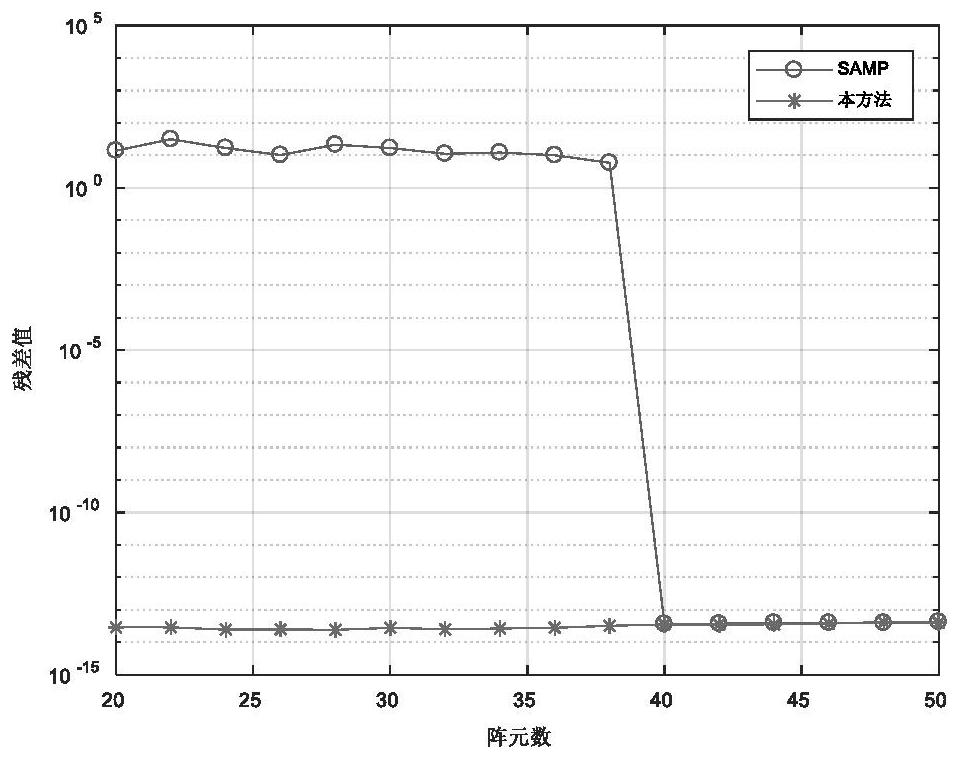Sparsity self-adaptive DOA estimation method and system based on pseudo-inverse perception dictionary
A sparsity and self-adaptive technology, applied in the field of signal processing, can solve problems such as limited scope of application, no iterative threshold, and inability to take into account the performance and resolution of signal restoration and reconstruction, etc., to achieve the effect of expanding the scope of application and eliminating threshold errors
- Summary
- Abstract
- Description
- Claims
- Application Information
AI Technical Summary
Problems solved by technology
Method used
Image
Examples
Embodiment 1
[0083] like figure 2 , An embodiment of the present invention proposed a method of adaptive orthogonal matching pursuit based on a pseudo inverse perceptual dictionary sparsity, the specific steps are as follows:
[0084] Input: M × N dimensional matrix A, the observation vector y, step F = 1;
[0085] 1. Initialization: initial iterations t = 1; r residual 0 = Y; matching matrix Atoms selected amount of the first stage L = F, the iteration index t = 1, the phase index j = 1;
[0086] 2. Select atoms: Calculation | [Phi] H rim t-1 |, Where Φ is the pseudo-inverse perception dictionary. Select the maximum value of the product L columns atoms, and these constitute a column number set J 0 ;
[0087] 3. Update matching matrix: Let Λ t = Λ t-1 ∪J 0 , A t = A t-1 ∩a t ;
[0088] 4. Update sparse coefficients:
[0089] 5. atoms backtracking: Select θ t L largest item, and re-form a new matrix A according to a corresponding matching maximum atoms selected items L tL ;
[0090] 6. backtr...
Embodiment 2
[0106] Based on the above method, Embodiment 2 of the present invention proposes a sparse-based adaptive DOA estimation system based on a pseudo-inherent dictionary.
[0107] The system includes M yuan uniform line array and estimation module;
[0108] The M element homogeneous line is used to receive K narrowband signal sources to obtain an observation vector of the noiseless field;
[0109] The estimation module is used to use the observed vector as an initial residual, and the sparse-based adaptive orthogonal matching method based on the pseudo-inverse perception dictionary is used. By continuous iterative steps, the residual value corresponding to this stage is obtained according to different stages. The contrast of the difference converges, obtains the minimum residual value, and thus obtains the corresponding sparse coefficient, and thereby obtains the direction of non-zero elements in the k narrowband signal source.
PUM
 Login to View More
Login to View More Abstract
Description
Claims
Application Information
 Login to View More
Login to View More - R&D
- Intellectual Property
- Life Sciences
- Materials
- Tech Scout
- Unparalleled Data Quality
- Higher Quality Content
- 60% Fewer Hallucinations
Browse by: Latest US Patents, China's latest patents, Technical Efficacy Thesaurus, Application Domain, Technology Topic, Popular Technical Reports.
© 2025 PatSnap. All rights reserved.Legal|Privacy policy|Modern Slavery Act Transparency Statement|Sitemap|About US| Contact US: help@patsnap.com



